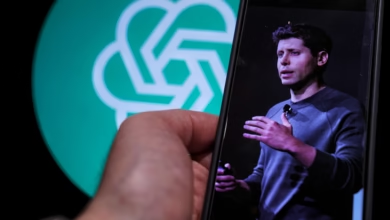Sam Altman: Why OpenAI’s CEO Was Destined for Success

▼ Summary
– The book explores Sam Altman’s career, from his early days at Loopt and Y Combinator to his leadership at OpenAI, including his brief ousting and reinstatement as CEO.
– OpenAI’s governance structure—a for-profit company controlled by a nonprofit board—is described as unstable, raising concerns among investors about future funding.
– Altman’s political views are traditionally progressive, yet he has successfully navigated deals with the Trump administration by focusing on shared infrastructure goals.
– Altman’s upbringing, shaped by his idealistic father and ambitious mother, influenced his worldview and leadership style, including his optimism about societal progress.
– The book highlights the polarized AI discourse, with extreme utopian and apocalyptic visions, while noting the technology’s growing practical impact on daily life.
Sam Altman’s rise from a curious Midwestern teen to the CEO of OpenAI captures the tension between technological ambition and real-world constraints. A new biography by journalist Keach Hagey, The Optimist: Sam Altman, OpenAI, and the Race to Invent the Future, traces how his trajectory—from launching startups to helming one of AI’s most influential companies—embodies Silicon Valley’s obsession with prodigious talent and world-changing ideas.
Hagey’s account reveals Altman’s unique leadership approach, blending strategic fundraising with political savvy. His knack for brokering high-stakes deals, even during politically volatile periods, demonstrates a willingness to engage with power structures to advance AI development. However, the book doesn’t shy away from his management blind spots, including a tendency to sidestep confrontation and make overly optimistic projections, traits that fueled internal dissent during OpenAI’s dramatic leadership upheaval last year.
Central to the narrative is OpenAI’s controversial dual structure, which merges nonprofit ideals with for-profit ambitions. Hagey suggests this hybrid model creates inherent instability, leaving investors uneasy despite the company’s technological dominance. With OpenAI recently scaling back plans to consolidate control under its commercial arm, questions linger about its long-term sustainability, a test of Altman’s problem-solving prowess.
The biography also explores Altman’s philosophical roots, shaped by his father’s faith in public-sector innovation. Though OpenAI initially envisioned government collaboration, its reliance on corporate partnerships has sparked debates about whether commercialization is outpacing safety considerations. Altman’s personal growth, from an introspective young programmer to a confident tech leader, mirrors broader shifts in how society grapples with AI’s potential.
Hagey tackles the divisive rhetoric surrounding artificial intelligence, where doomsday scenarios compete with utopian promises. She argues these exaggerated narratives distract from more nuanced discussions about responsible development. As Altman navigates OpenAI’s next chapter, his career serves as a case study in balancing idealism with the messy realities of scaling transformative technology.
The book leaves one question unanswered: Can Altman deliver on his grand visions? What’s undeniable, Hagey concludes, is his uncanny ability to inspire belief, a skill that keeps him at the forefront of an industry redefining what’s possible.
(Source: TechCrunch)






